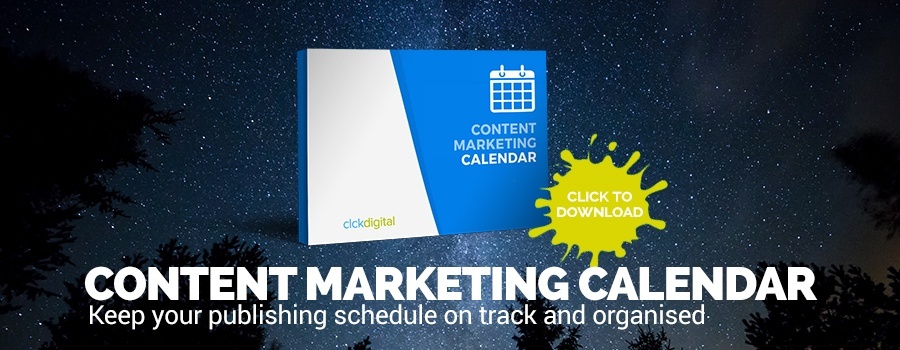There’s no doubt that a sound content strategy is a must-have in any marketing toolbox – but putting one together can be easier said than done!
Your content strategy covers the creation and management of all the written, audio and visual content related to your business. This includes blog articles, podcasts, social media, case studies, videos, ebooks and anything else that educates and provides value to your potential customers. The fundamental goal of the strategy is to identify the right type of content for your customers’ journey, and work out the best way to get it in front of the right people.
Whether you’re starting from scratch, or updating and refreshing an existing one, the success of your content strategy relies heavily on what goes on behind the scenes. Without a clear plan of attack, much time, effort and money can be wasted on content that misses the mark.
So to help you avoid that and get it right first time, in this article we share some insider tips on how to create and execute an effective content strategy.
Identify Your Aim
The first essential step of any strategy is to be clear on the purpose of your content. Think here about the ultimate goal, but be specific.
For example, many of our clients sell high-priced products and services, and so their customers want assurances that they are making the right choice before they commit. The key messaging in their content strategy is to provide information that educates about the product, showcases their expertise as an industry leader and provides the audience with social proof from others who have made the purchase and loved it.
Understand Your Audience
Another key element of getting the messaging right is knowing your target audience.
A good way to do this is to create a buyer persona, which describes your ideal customer, and many businesses will have more than one.
The information you use to create your personas comes from real-life data and market research based on your current customers and their interactions with your business. Use your personas as a guide when developing your strategy, to make sure your content is relevant and interesting to them at all times.
Assess Your Existing Content
Before you create anything new, it’s important to look at your existing content and identify gaps that need to be filled as well as opportunities for repurposing.
In terms of filling gaps, prioritise the things that will have the greatest impact, such as blog articles on a hot topic that your customers are asking about or searching for. You may also find that some existing content can be freshened up and revived for a new audience, or even repurposed into something new. For example, if you have a series of blog articles that explain different aspects of your service in detail, you could put them together to create an ebook, which can then be set up as valuable gated content on your website.
Getting Your Plan on Paper
When it comes to content, if you want maximum results with the least amount of effort, a content marketing calendar is a must.
A spreadsheet is the ideal place to get your ideas organised and it can be easily edited as things change. If this is your first strategy and you’re not sure where to start, download our free content marketing calendar template, which includes all the columns we use with clients plus some sample entries too.
Trello is another great way to organise your content marketing workflows. The simple interface is great for having lists of what content pieces are at various stages.
The things you’ll need to think about here are the type of content you’ll use, where you’ll promote it and how frequently you’ll post and share. It’s a good idea to map out your calendar with a good balance of content pillars, to keep it interesting and avoid focusing too heavily on any one area. Depending on your brand and audience you may include a mix of pillars, such as awareness (what you offer), authority (sharing your expertise) and affinity (bonding with your audience).
Create, Publish and Promote
Now comes the fun part – writing your content and getting it out there in front of your ideal customers!
You may choose to write all the content yourself, or share the load with other members of your team. There’s also the option to outsource your content marketing if writing is not your strong point or you’re pressed for time.
When publishing to your social accounts or blog, there are various content management systems (CMS) that you can use to save you time and track your results, such as HubSpot which we use and recommend. As far as promotion goes, choosing one or two social media platforms to regularly post on is ideal – just make sure you choose the ones where your customers are spending time.
Remember, promoting your content is just as important, if not more important, then creating it. Many experts believe you should actually spend around 20% of the time creating the content, and the other 80% promoting. Most people have this the wrong way round.
The Best Strategies are Dynamic
Now that you’ve put in the hard yards of planning, creating and promoting your content, it’s time to monitor the results.
Look for areas that are working that can be expanded on, and check for anything that’s not getting traction, then tweak it to see if you can turn that around (or get rid of it entirely to focus on what is working).
Engaging with your customers via your social platforms will allow you to get to know them better and you can use this knowledge to further develop your personas and plan future content, so always respond promptly to every comment and question you receive.
Avoid rolling out content for the sake of it, or being slack and not showing up (half the battle is just doing something). And always keep your original goals front of mind – because the content strategies that get the best results are those that are dynamic, connected, and consistent.
Have a content strategy tip of your own you’d like to share or a question you’d like answered? We’d love to hear from you! Post a comment below or get in touch with our team.

- How Videos Can Be Used in Email Marketing for More Engagement - April 4, 2022
- Attention Home Builders: Here’s How to Educate, Engage and Win Over Potential Customers - October 19, 2020
- The Best Digital Marketing Framework for High Ticket Businesses - September 14, 2020






